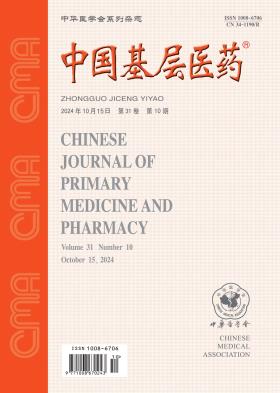Clinical effect of intra-abdominal pressure monitoring on jejunal nutrition in critically ill patients
引用次数: 0
Abstract
Objective To investigate the clinical effect of intra-abdominal pressure monitoring on jejunal nutrition in critically ill patients. Methods From March 2017 to September 2018, 124 critically ill patients who needed early jejunal nutrition in ICU of our hospital were selected and randomly divided into observation group (63 cases) and control group (61 cases) according to the digital table.The observation group adjusted enteral nutrition according to IAP monitoring, while the control group was routinely observed and guided enteral nutrition.Intra-abdominal pressure was compared between the two groups.The changes of blood lactic acid, endotoxin and APACHE Ⅱ score were compared between the two groups. Results After treatment for 7 days and 14 days, the intra-abdominal pressure of the observation group[(14.28±2.36)mmHg, (12.08±1.78)mmHg] were lower than those of the control group [(16.05±2.55)mmHg and (15.21±2.11)mmHg] (t=4.013, 8.939, all P<0.05). After treatment for 14 days, the blood lactic acid, endotoxin, APACHE Ⅱ score in the observation group were (2.19±0.73)mmol/L, (0.71±0.21)U/L and (10.02±1.54), which were lower than those in the control group [(3.98±0.95)mmol/L, (0.92±0.23)U/L and (13.06±1.72)] (t=11.788, 5.313, 10.376, all P<0.05). The incidences of abdominal distension (9.52%) and gastric retention (7.94%) in the observation group were significantly lower than those in the control group (28.57%, 27.87%) (χ2=7.930, 8.437, all P<0.05). Conclusion Early jejunal nutrition under the monitoring of intra-abdominal pressure in critically ill patients can help to reduce intra-abdominal hypertension, promote the rehabilitation of patients, reduce the incidence of complications of jejunal nutrition and improve patients’ tolerance, which is worthy of clinical promotion. Key words: Enteral nutrition; Pressure; Abdominal cavity; Lactic acid; Endotoxins; APACHE Ⅱ score腹内压监测对危重病人空肠营养的临床影响
目的探讨腹内压监测对危重病人空肠营养的临床效果。方法选取2017年3月~ 2018年9月在我院ICU需要早期空肠营养的危重症患者124例,按数字表随机分为观察组(63例)和对照组(61例)。观察组根据IAP监测调整肠内营养,对照组常规观察指导肠内营养。比较两组患者的腹内压。比较两组患者血乳酸、内毒素及APACHEⅡ评分的变化。结果治疗7 d和14 d后,观察组患者腹内压[(14.28±2.36)mmHg,(12.08±1.78)mmHg]均低于对照组[(16.05±2.55)mmHg,(15.21±2.11)mmHg] (t=4.013, 8.939, P均<0.05)。治疗14 d后,观察组患者血乳酸、内毒素、APACHEⅡ评分分别为(2.19±0.73)mmol/L、(0.71±0.21)U/L、(10.02±1.54)分,均低于对照组[(3.98±0.95)mmol/L、(0.92±0.23)U/L、(13.06±1.72)分](t=11.788、5.313、10.376,P均<0.05)。观察组患者腹胀(9.52%)、胃潴留(7.94%)发生率显著低于对照组(28.57%、27.87%)(χ2=7.930、8.437,均P<0.05)。结论危重症患者监测腹内压下早期空肠营养有助于降低腹内高压,促进患者康复,减少空肠营养并发症的发生,提高患者耐受性,值得临床推广。关键词:肠内营养;压力;腹腔;乳酸;木糖醇;APACHEⅡscore
本文章由计算机程序翻译,如有差异,请以英文原文为准。
求助全文
约1分钟内获得全文
求助全文
来源期刊
CiteScore
0.10
自引率
0.00%
发文量
32251
期刊介绍:
Since its inception, the journal "Chinese Primary Medicine" has adhered to the development strategy of "based in China, serving the grassroots, and facing the world" as its publishing concept, reporting a large amount of the latest medical information at home and abroad, prospering the academic field of primary medicine, and is praised by readers as a medical encyclopedia that updates knowledge. It is a core journal in China's medical and health field, and its influence index (CI) ranks Q2 in China's academic journals in 2022. It was included in the American Chemical Abstracts in 2008, the World Health Organization Western Pacific Regional Medical Index (WPRIM) in 2009, and the Japan Science and Technology Agency Database (JST) and Scopus Database in 2018, and was included in the Wanfang Data-China Digital Journal Group and the China Academic Journal Comprehensive Evaluation Database.

 求助内容:
求助内容: 应助结果提醒方式:
应助结果提醒方式:


